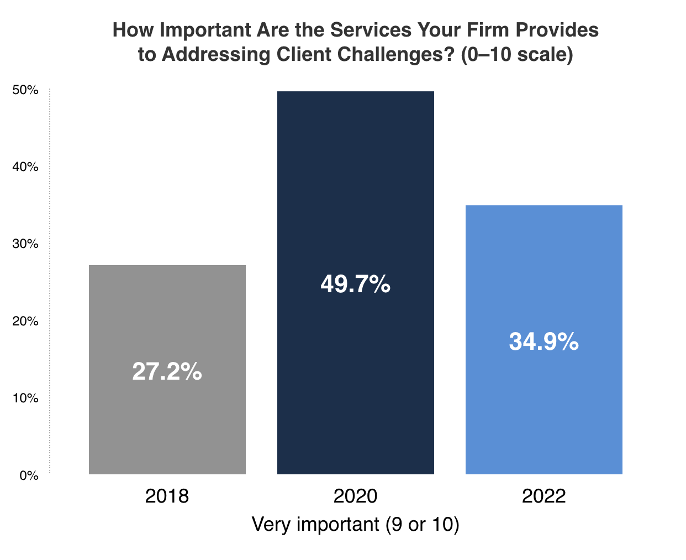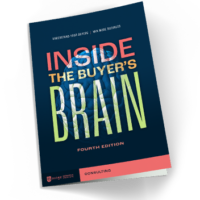Over the past two years, a variety of external pressures have influenced what professional services buyers are looking for in a partner. Consulting firms have been grappling with that shift, and they will have to adapt their marketing and business development strategies to attract new buyers and address the evolving needs of their existing clients. Today’s buyers of consulting services are tightening their wallets and expect more for the dollars they spend.
To help firms like yours make sense of these changes, the Hinge Research Institute has released an all-new fourth edition of Inside the Buyer’s Brain: Consulting.—our ongoing study of buyer behavior in the consulting industry.
About the Study
The original Inside the Buyer’s Brain study was published in 2013 and provided the first comprehensive look at the differing perspectives of buyers and sellers throughout the entire professional services buyers’ journey. The second version was released in 2018, followed by the 3rd edition in 2020.
This year’s study analyzes the consulting industry in detail, based on input from more than 300 buyers and 300 sellers.
The 2022 study is organized around four questions that examine the key moments in a consulting services buyer’s journey.
Question 1: What are Consulting Buyers’ Top Business Challenges?
Most professional services firms believe they understand the challenges their potential clients face. More often than not, they are wrong. The data below highlights the key areas where sellers either overestimate or underestimate their buyers’ key business challenges.
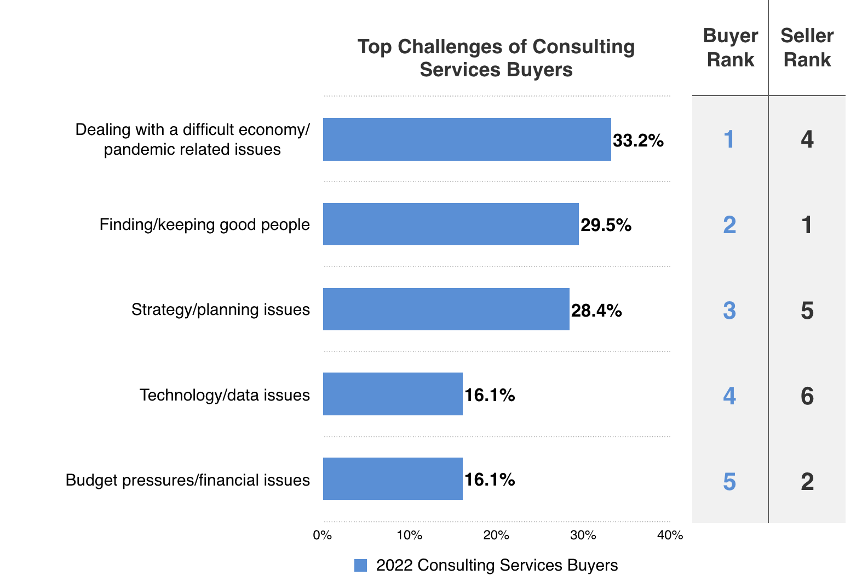
Question 2: How Do Clients Feel About Their Consulting Firm?
Consulting buyers’ willingness to recommend their current consulting firm reached an all-time high in 2022, at 80.7%. One explanation for this year’s increase could be that firms’ subject matter expertise, experience, staff skills and existing client relationships have raised their perceived value in the eyes of their clients. Buyers who benefit from the work of their firms are now more comfortable sharing their satisfaction with peers and colleagues.
Another measure of buyers’ perceptions is relevance. Unfortunately, relevancy ratings of consulting firms to their buyers’ top challenges dropped significantly—from 49.7% in 2020 to 34.9% in 2022. Relevancy is going to fluctuate depending on client needs, market conditions, and a firm’s offerings. For example, during the COVID-19 pandemic, firms that provided solutions that addressed healthcare and supply chain issues were likely to have been seen as more relevant. A shift in your messaging—or adding new services that address your audience’s most important challenges—could increase your perceived relevance.
Question 3: How Do Buyers Evaluate Consulting Firms?
Nurturing existing relationships is still essential to getting additional engagements for consulting firms. We’ve noticed an ongoing shift toward subject matter expertise as the leading criteria for buyers at the early stages of the selection process. The graph below shows a 40% jump from 2020 to 2022.
This is critical information for consulting firms who are looking to expand their ability to attract new clients beyond traditional referrals. An effective way consulting firms can demonstrate that subject matter expertise and relevant experience (the second most important criteria) is by publishing thought leadership pieces and case studies on their website. Content like this helps your buyers feel confident that your firm is highly qualified to solve their key business challenges.
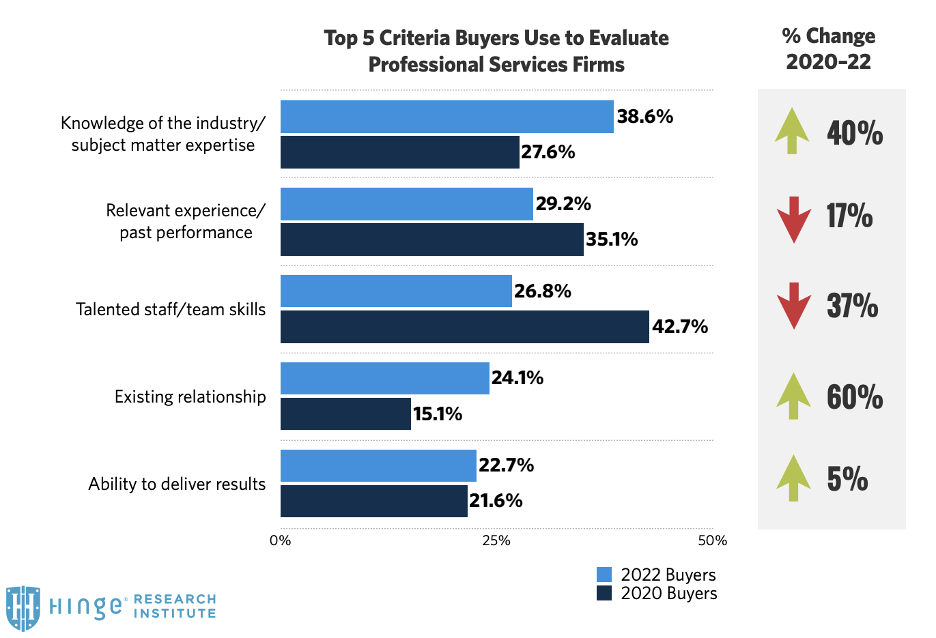
Question 4: What is the Top Deciding Factor for Selecting Consulting Firms?
What’s most important when actually selecting a firm? Four of the five top factors that tip the scale this year were also on the 2020 lists. However, the order has changed. “Existing relationship” has risen to the top and switched places with “talented staff/team skills.”
As you explore these changes in your buyers’ behavior, consider making expanding existing relationships a bigger part of your marketing and business development strategy. Look for opportunities to recommend new projects to your existing client teams. Or encouraging your clients to refer you to other colleagues in their companies.
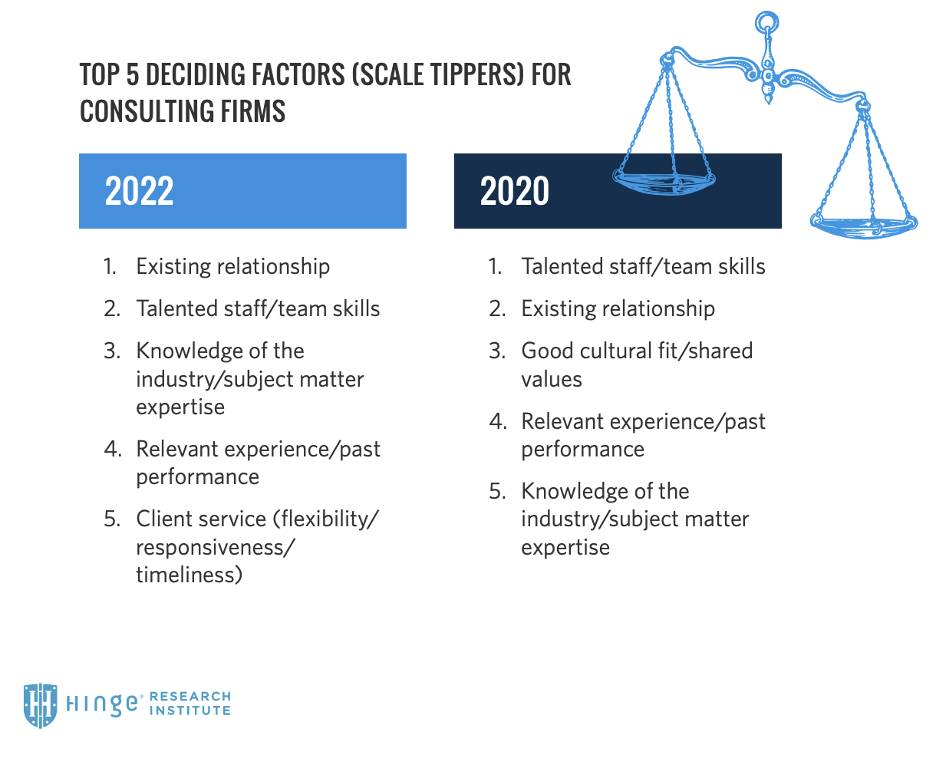
Final Thoughts
There have been several shifts in key selection criteria since our 2020 study. Some strategies that sellers were using a couple of years ago, might not be as relevant to your buyers now. Insights like these can help you firm tailor its messaging to address the latest key challenges that your buyers face. At the same time, consider developing valuable educational content that reinforces your subject matter expertise.
Hopefully, this gives you a valuable peek inside the buyer’s brain from a consulting firm perspective. This is just a small glimpse. To learn more—including practical insights and actionable tips to help your consulting firm compete—purchase the full Inside the Buyer’s Brain: Consulting Firm 4th Edition report today.
How Hinge Can Help
To learn more of the findings from our Inside the Buyer’s Brain research, be sure to download the free Inside the Buyer’s Brain Executive Summary. You may also want to consider purchasing the full Inside the Buyer’s Brain study (available in five industry editions) or license a full study so that you can use the content in your marketing campaigns over the next 12 months. Contact the Hinge Research Institute for more details.

